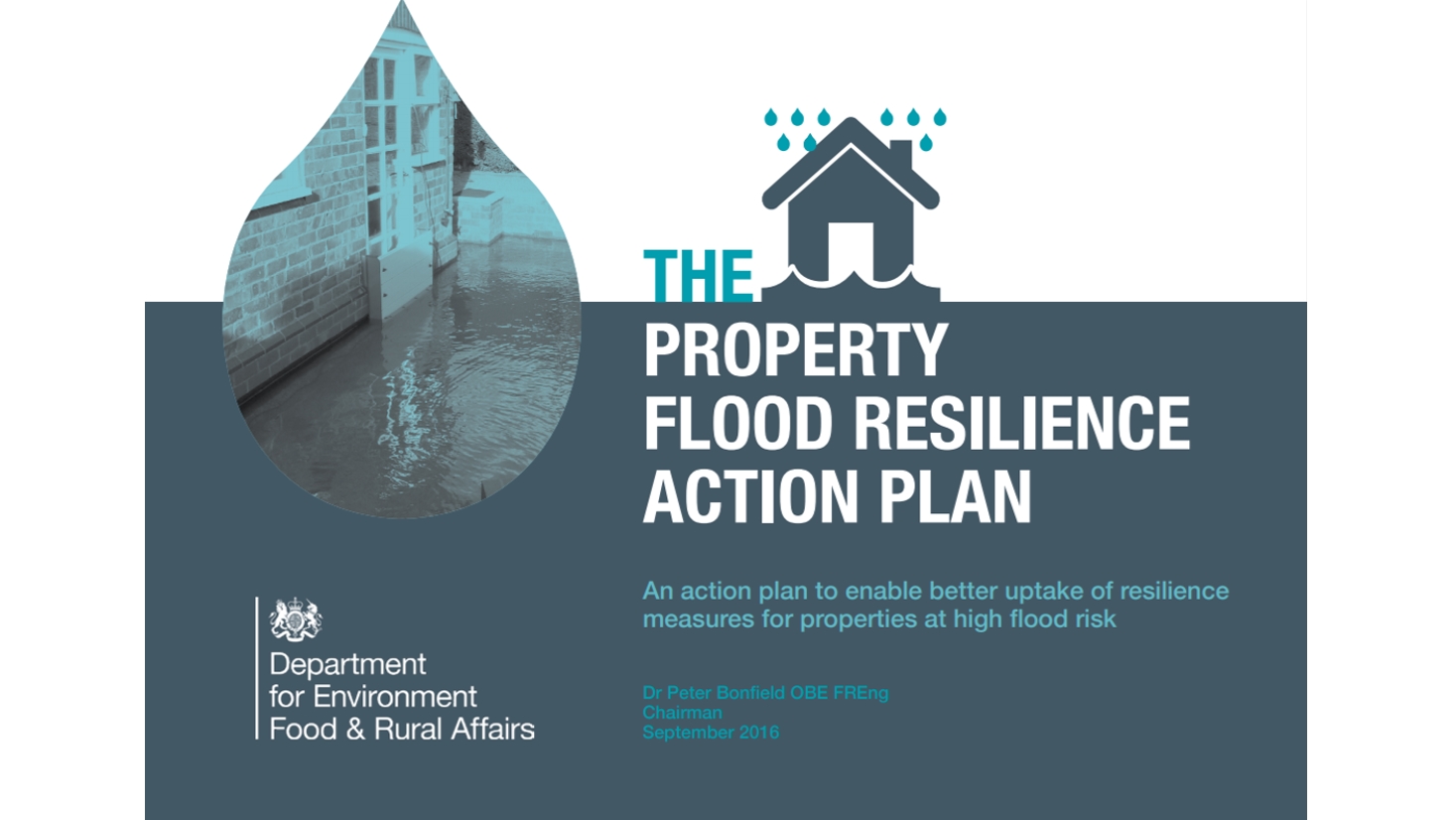Early September 2016 saw the release of the Property Flood Resilience Action Plan as an output from the DEFRA Property Level Flood Resilience Roundtable. The report outlines the key task groups; their aims and objectives; leading to further recommendations and actions. The creation of this website is covered under Task Group 3; the full report can be found here.
The Property Flood Resilience Roundtable who published the action plan, chaired by Dr Peter Bonfield OBE FREng (Chief Executive Officer of BRE), is a private sector initiative supported by government, aimed at bringing key business interests together to encourage and enable wider uptake of property level flood resilience within the UK.
The consequences of climate change have struck close to home in recent years, with extreme weather and flooding events in the UK, notably in 2013/14 and 2015/16 causing billions of pounds worth of damage to properties and disruption to the lives of thousands of people as a result. Property resilience measures have been identified as a key solution in the action plan, to reduce the costs of repair and recovery time of affected properties, which in turn would hope to minimise the misery and interruption experienced by both families and businesses.
As Dr Peter Bonfield explains:
“These can be installed as either a preparatory measure, for properties at risk of flooding, or during the repair of buildings after they have been flooded. Property measures can help prevent flood water ingress into a building or aid rapid recovery and allow householders to simply wash out and disinfect after flooding, rather than requiring wholesale replacement of the fabric or the property.”
The review covered several aspects, including; barriers to accessing funding for the installation of resilience measures; barriers to the provision of resilience measures by insurance companies; information dissemination through the creation of ‘One Stop Shop’; standards, certification and skills; and the role of communications in driving behaviour change. A number of case studies, showing how quickly buildings have become operational after flooding when such resilient measures are implemented are also included within the website element.
However, Dr Bonfield states:
“Going forward these outcomes need to be further progressed and consolidated if we are to see real and lasting change. There is considerable will and intent within the Roundtable and further afield to harness the momentum that has been created by this work and further partnership working will help embed these changes; this is the start rather than end of a journey.”
The Resilient House at the BRE Innovation Park, Watford is an example of an up and coming demonstration of how effective flood resilience measures function. BRE has worked closely with the industry on the design, specification and construction of the demonstration, to ensure that the most appropriate measures have been showcased – based on the collective experience of experts in this field and on the latest approaches and innovations.
Dr Garvin (Director, Centre for Resilience) who leads the Resilient House project explains that:
“This demonstration will give us a focal point for raising awareness of the issues at the heart of flood repair and resilience with contractors, householders and the insurance industry. From this we will develop standards and certification schemes, and drive forward the adoption of the skills required to lead to wide scale implementation of resilient repair. It is expected that training packages will be developed around the project, and we are actively seeking more industry partners for this purpose. As well as the demonstration we are developing standards and guidance that can be applied by the insurance and construction industry.”
Original article at BRE Buzz.


